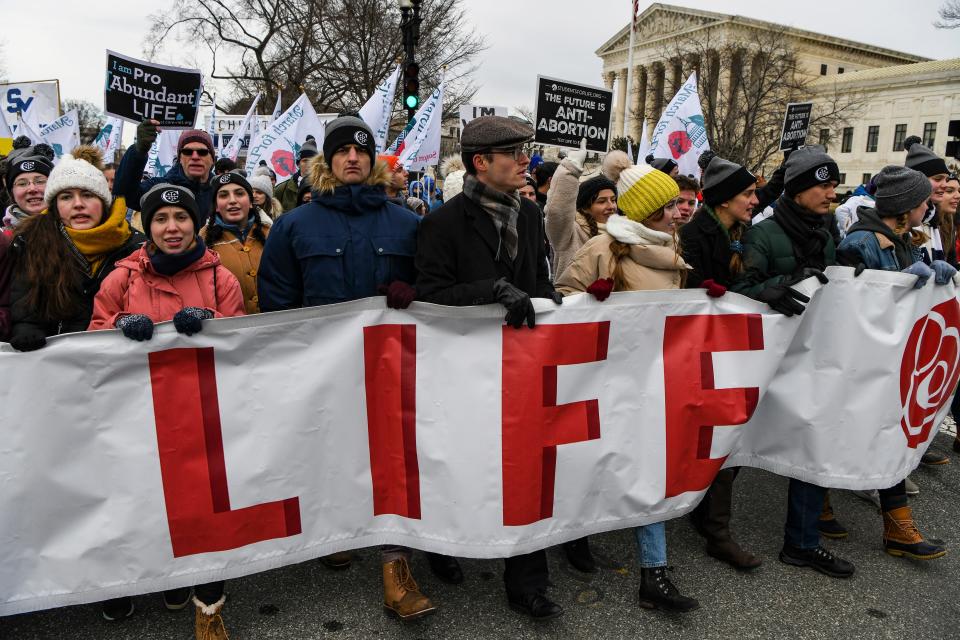How Roe changed American women's lives

(Editor's note: We are republishing this 2018 piece in light of Monday's release by Politico ofa draft of a Supreme Court opinion that would overturn the historic Roe v Wade decision.)
If the Roe v. Wade decision were overturned – reducing or completely eradicating women’s control over their reproductive lives – would the average age at marriage, the educational attainment level and the labor force participation of women decrease again?
These questions are also difficult to answer. But we can see the effect that teen pregnancy, for example, has on a woman’s education. Thirty percent of all teenage girls who drop out of school cite pregnancy and parenthood as key reasons. Only 40 percent of teen mothers finish high school. Fewer than 2 percent finish college by age 30.

Educational achievement, in turn, affects the lifetime income of teen mothers. Two-thirds of families started by teens are poor, and nearly 1 in 4 will depend on welfare within three years of a child’s birth. Many children will not escape this cycle of poverty. Only about two-thirds of children born to teen mothers earn a high school diploma, compared to 81 percent of their peers with older parents.
The future depends in large part on efforts at the state and federal level to protect or restrict access to contraception and abortion. Ongoing opposition to the legalization of abortion has succeeded in incrementally restricting women’s access to it. According to the Guttmacher Institute, a research group that studies reproductive policies, between 2011 and mid-2016, state legislatures enacted 334 restrictions on abortion rights, roughly 30 percent of all abortion restrictions enacted since Roe v. Wade.
In 2017, Kentucky enacted a new law banning abortion at or after 20 weeks post-fertilization. Arkansas banned the use of a safe method of abortion, referred to as dilation and evacuation, which is often used in second-trimester procedures.
Of course, medical abortion isn’t the only way in which women can exert control over reproduction.
Even before 1973, American women had access to a wide range of contraceptives, including the birth control pill, which came on the market in 1960. Five years later, in Griswold v. Connecticut, the Supreme Court ruled that married couples could not be denied access to contraceptives. In 1972, in Eisenstadt v. Baird, the court extended this right to unmarried persons.
In 2017, a record number of states acted to advance reproductive health rights in response to actions by the federal government. In 2017, 645 proactive bills were introduced in 49 states and the District of Columbia. Eighty-six of those were enacted and an additional 121 passed at least one committee in a state legislature.
How would the lives of American women in the last decades of the 20th century and early 21st century have unfolded if the court had made a different decision in Roe v. Wade? Would women be forced into compulsory pregnancies and denied the opportunity to make life plans that prioritized educational and employment pursuits? Would motherhood and marriage be the primary or exclusive roles of women in typical childbearing ages?
With the availability of a greater range of contraception and abortion drugs other than medical procedures available today, along with a strong demand for women’s labor in the U.S. economy, it seems unlikely that women’s status will ever go back to where it was before 1973. But Americans shouldn’t forget the role that Roe v. Wade played in advancing the lives of women.
Constance Shehan is professor of sociology and women's studies, University of Florida. She first published this piece in July 2018. It was distributed by The Conversation.
This article originally appeared on Palm Beach Post: Commentary: The impact Roe v. Wade has had on American women

